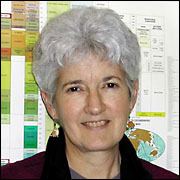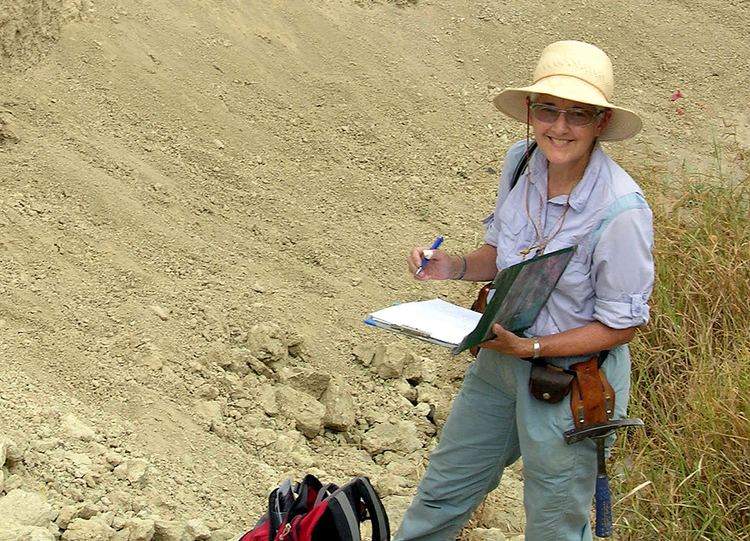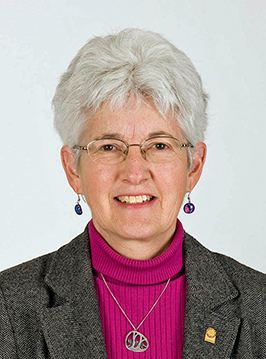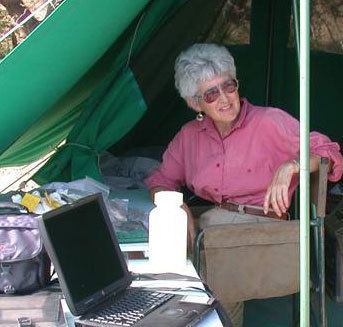Spouse William Keyser Children Two | Name Kay Behrensmeyer | |
 | ||
Thesis The Taphonomy and Paleoecology of Plio-Pleistocene Vertebrate Assemblages East of Lake Rudolf, Kenya (1973) Alma mater | ||
Anna Katherine "Kay" Behrensmeyer is an American taphonomist and paleoecologist. She is a pioneer in the study of the fossil records of terrestrial ecosystems and engages in geological and paleontological field research into the ecological context of human evolution in East Africa. She is Curator of Vertebrate Paleontology in the Department of Paleobiology at the Smithsonian Institution's National Museum of Natural History (NMNH). At the museum, she is co-director of the Evolution of Terrestrial Ecosystems program and an associate of the Human Origins Program.
Contents
Education and career

Behrensmeyer received her B.A. from Washington University in St. Louis.

In 1968, Behrensmeyer made a detailed investigation of Lothagam, a Kenyan paleontological formation dating to the late Miocene-early Pliocene period. Within the succession, she identified six lithostratigraphic units. She later compiled a chart for the 400 fossil specimens collected in 1967 and published a faunal list for Lothagam 3 in 1976.

While she was a graduate student at Harvard in 1969, Behrensmeyer was invited by paleoanthropologist Richard Leakey to be his team's geologist and map fossil deposits at Koobi Fora in Kenya. She discovered a cluster of stone tools eroding out of a volcanic tuff, an ash layer from an ancient eruption that filled a small paleochannel. The site was named in her honor and the layer was named the Kay Behrensmeyer Site Tuff or KBS Tuff. The tools were similar to those discovered by Mary Leakey at Olduvai Gorge. The team's radiometric dating indicated that the fossils were 2.6 million years old. The dating of the site was controversial, as it contradicted other paleobiological evidence. A later independent investigation revised the date to 1.9 mya.
Behrensmeyer received her Ph.D. in vertebrate paleontology and sedimentology from Harvard University's Department of Geological Sciences in 1973. Her dissertation, published in 1975, showed that the composition of the fossil vertebrate faunas of East Turkana, Kenya, varied with sedimentary environment (channel, floodplain, lake margin), and this provide new information on the taphonomy and paleoecology of hominin-bearing, Plio-Pleistocene sediments . She held post-doctoral positions at UC Berkeley and Yale and taught for UC Santa Cruz's Earth Science Board before beginning her career at the Smithsonian Institution in 1981. Since 1986, she has led research on the geological context of Olorgesailie.
Since 1987, Behrensmeyer has been the co-director of Evolution of Terrestrial Ecosystems Program at the National Museum of Natural History. From 1993 to 1996 she served as Acting Associate Director for Science at NMNH. She has served as Associate Editor for the Paleobiology, PALAIOS and Palaeoclimates journals. From 1985 to 1987 she was on the Board of Associate Editors for the Journal of Human Evolution. She is also an Adjunct Professor at the University of Arizona and George Washington University.
Aside from Behrensmeyer's research into the paleoecology and taphonomy of hominid-bearing deposits in the Olorgesailie basin, Baringo basin and East Turkana, she has conducted a long-term study of the taphonomy of modern vertebrate remains in Kenya's Amboseli National Park beginning in 1975, in collaboration with ecologist David Western. The study involves a census of live animals and carcasses every five to 10 years. The study suggests that fossil animal assemblages in tropical settings can be used to make inferences about ancient habitats when post-depositional taphonomic biases are accounted for. Her other projects include field exploration and analysis of Upper Triassic – Lower Jurassic vertebrate taphonomy and paleoecology in Arizona and paleoecological research in the Miocene Pakistan Siwalik sequence. Behrensmeyer is also compiling a taphonomic reference collection of bones and fossils at the National Museum of Natural History.
She was named one of the "50 Most Important Women Scientists" by Discover magazine in 2002.
Honors and Awards
Selected publications
Behrensmeyer has published over 130 scientific articles.
